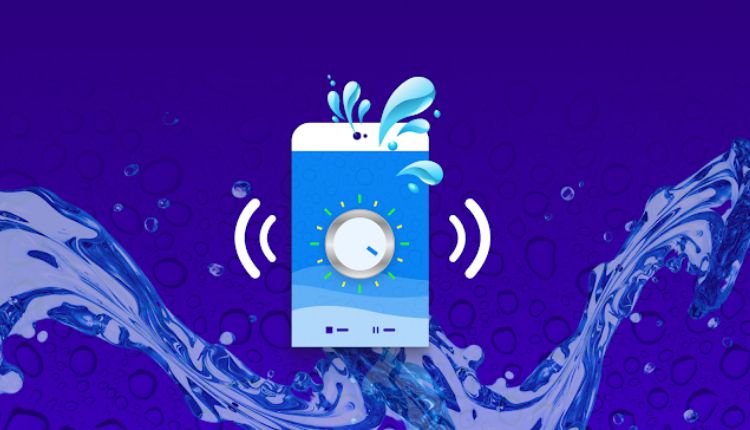Whether you’re talking about your smartphone, a Bluetooth eject water from speakers, or a laptop, water caught inside can mess with the sound, lower the volume and even cause permanent damage if it isn’t dealt with properly. Luckily, there are some very effective ways to wring the water out of your speakers and get the sound back. This guide will outline the most effective methods for safely removing water from your speakers.
So How Do Eject Water From Speakers?
Water can block sound because it eject water from speakers gets in the way between the speaker diaphragm and the air. Even worse, if water gets deeper inside the speaker, the inner electrical components may be at risk. Most modern gadgets come with water-resistant features but never waterproof, so it is important to take action ASAP.
How to Know If Your Eject Water From Speakers Inside
Muffled or distorted sound – The speaker might sound muted or fuzzy.
Buzzing or crackling sounds – Because of water, electrical signals can be disrupted, resulting in abnormal sounds.
Low volume output – Water blockage may affect sound output significantly.
Intermittent audio dropouts — Water may transiently interrupt sound.
If you are experiencing any of the issues eject water from speakers below with your speaker after it’s been exposed to water, it is important to take action and try to remove the moisture immediately.
How to Remove Eject Water From Speakers
Sending Water Through Sound Waves (Water Ejecting Apps and Websites)
Music frequencies themselves can be used to eject water from speakers extract some of the excess water from a speaker otherwise sound can’t play at louder rates. Most smartphones and smart devices have built-in apps or features that play low-frequency sounds, vibrating the speaker membrane to force the water out.
Apple’s Water Eject Shortcut: If you have an iPhone, you can use the Water Eject shortcut, which is available through the Shortcuts app, to remove water from the device’s speakers.
For Android and Web Solutions: Speaker Cleaner, FixMySpeakers, etc. com produce sound waves that help push water out.
Manually Drying The Eject Water From Speakers
If you want to take a proactive approach, eject water from speakers you could attempt drying out the speaker manually by following these steps:
Moving the Device – Specifically try tilting and shaking the speaker thing gently, to eliminate extra water.
Use a Microfiber Cloth — Following up, lightly pat the speaker grille area dry with a dry, absorbent microfiber cloth to draw up moisture.
Air Dry – Set the speaker in a dry, well-ventilated location and allow it to air dry for a few hours. Do not use the device during this time period.
Using a Vacuum or Compressed Air
Use a vacuum cleaner on a low eject water from speakers setting to pull moisture out of the speaker. Otherwise, you can spray it with a can of compressed air to dislodge trapped water droplets. But be sure to shoot it in short bursts and held at a safe distance to avoid damage.
Rice or Silica Gel Method (Non-Waterproof Devices)
If the speaker is within a phone or some other electronic device, then placing it down in a bag of uncooked rice or silica gel packages is margianally effective. These materials allow for the absorption of moisture over time. Leave the device in place for at least 24 hours before attempting to test the speaker again.
How to Disconnect Eject Water From Speakers Safely
No Hair Dryer: Heat can harm the internal components.
Do Not Poke Toward the Grille: Sticking a eject water from speakers needle or a paper clip into the speaker grille will likely damage the speakers permanently.
Don’t Play Loud Music Right Away: Once you finish cleaning, make sure the speaker is completely dry before testing it at high volume.
How To Eject Water From Speakers Going Forward
Protect from Accidental Water Damage: eject water from speakers Waterproof Covers or Cases
Keep Electronics Away from Water Sources Avoid putting your speakers near pools, sinks, or beverages.
Dry Store: Make sure to keep your speakers in a moisture-free environment when not in use.
Think about Water-Resistant Speakers: If you use speakers around water often, look for models with an IP67 or ever higher rating.
When to Get Help Eject Water From Speakers
If none of these methods return your speaker’s eject water from speakers sound quality, the water has likely seeped into internal components. In this scenario, you might need professional repair services. And if all else fails, call the manufacturer or a certified technician.
Final Thoughts
Damage to speakers caused by eject water from speakers is often repairable through basic methods like sound waves, air drying, and absorbent materials. If you catch the issue early and take the proper actions, you can avoid some damage and ensure your speakers sound their best. If you spend a lot of time around water, being proactive will be worth your time and money in the long run. This guide will help you deal with accidental water exposure and keep your speakers in good condition.
